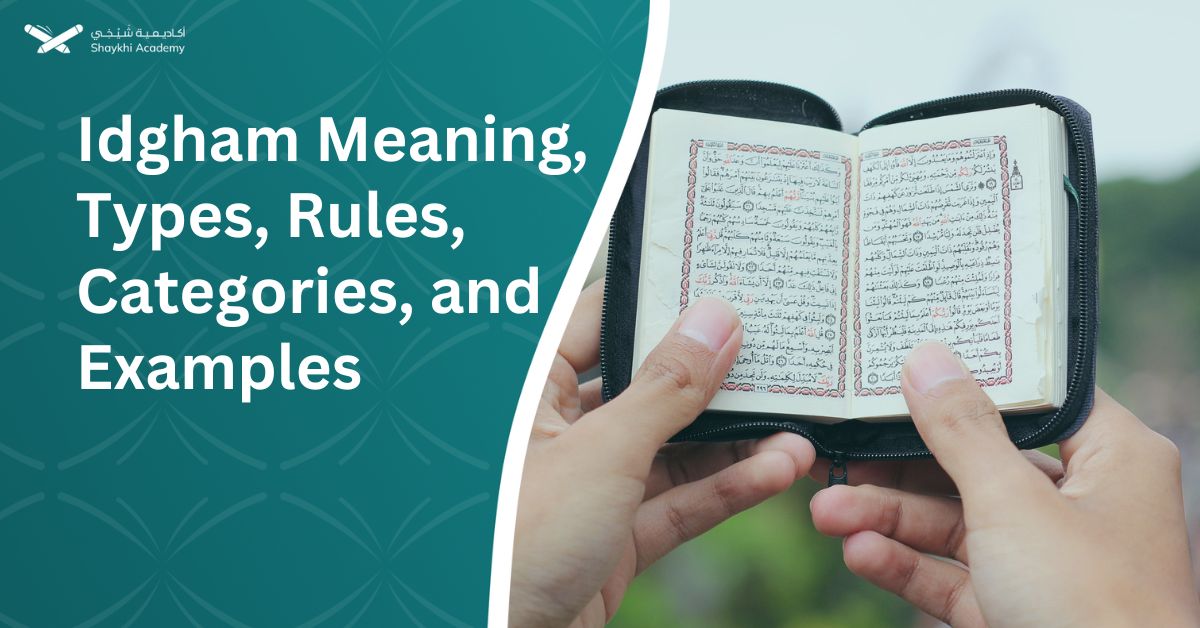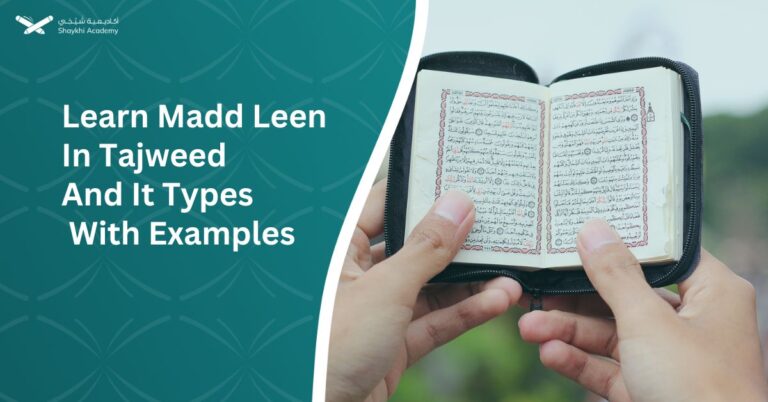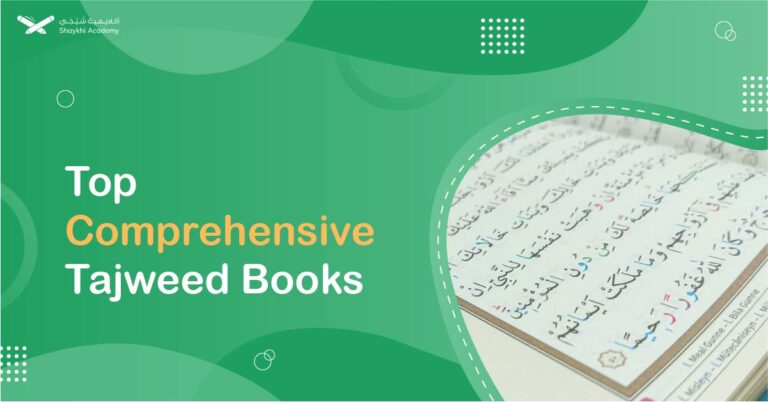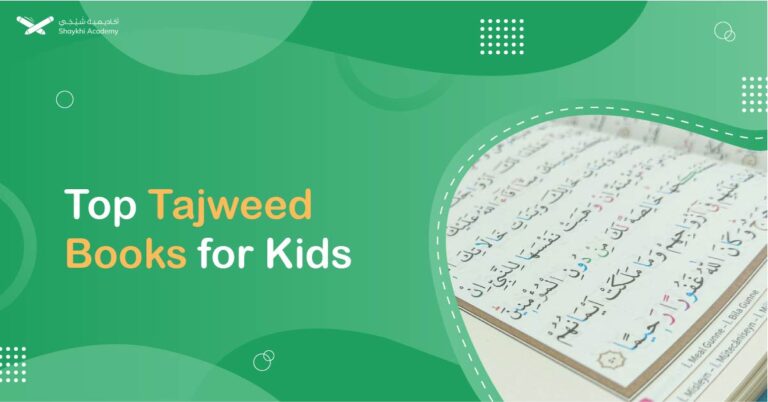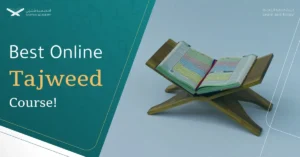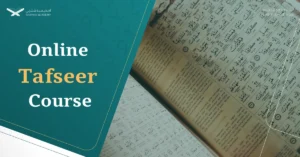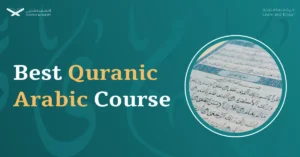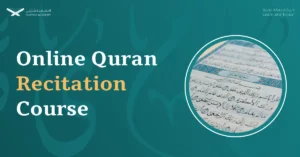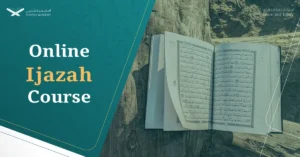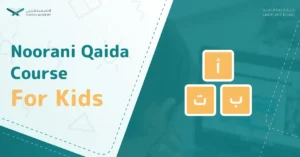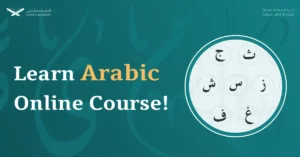Do You know The Idgham meaning? Ever wondered how beautifully the Quran flows when recited? There’s a reason for that! Tajweed, the rulebook for proper Quran recitation, lays out specific guidelines to achieve this melodious flow. One such concept is Idgham, referring to the assimilation of letters for a smoother pronunciation. But what exactly is Idgham?
And how does it influence Tajweed? This article dives deep into the world of Idgham, exploring its various classifications and providing examples from the Quran to illustrate these concepts. Are you ready to learn more about Idgham and enhance your understanding of Tajweed? Let’s get started!

In a nutshell, Idgham is a fundamental concept encompassing the assimilation of one letter into another, either with or without the accompanying nasal sound known as Ghunnah. There are two main types: Idgham with Ghunnah and Idgham without Ghunnah, each serving to enhance the fluidity and authenticity of Quranic recitation.
Idgham can further be categorized based on the completeness of merging, place of articulation, and other factors. For instance, Idgham Taam involves complete assimilation, while Idgham Naqis entails partial assimilation.
Additionally, Idgham Shafawi specifically deals with the merging of Meem Sakinah and Meem Mushaddadah, ensuring smooth recitation. Mastering these principles is crucial for reciters to achieve a captivating and accurate rendition of the Quran, preserving its authenticity and beauty.
What is Idgham?
Idgham (إدغام) refers to the assimilation or merging of one letter’s sound into another. This practice creates a smooth and seamless flow when transitioning between specific letters in certain situations. Essentially, two separate sounds are joined to become one extended sound.
What is Idgham in Tajweed?
Idgham in Tajweed refers to merging of two letters together so that they are pronounced as one sound. Imagine transitioning between specific letters not with a break, but with a smooth joining, creating a beautiful flow of recitation. This practice isn’t merely about aesthetics; it serves a multitude of purposes.
- Preserving Authenticity: Tajweed scholars meticulously documented the pronunciation of the Quran as it was transmitted through generations. Idgham plays a vital role in ensuring the Quran is recited with the intended accuracy, safeguarding its authenticity.
- Reflecting the Natural Flow: The Arabic language itself exhibits a natural tendency for certain sounds to merge under specific circumstances. Idgham principles mirror these tendencies, creating a recitation that feels organic and aligned with the language’s inherent characteristics.
- Enhancing the Melody: By eliminating harsh transitions between certain letters, Idgham allows the recitation to flow effortlessly, creating a more melodious experience for both the reciter and the listener.
By mastering the art of Idgham, reciters can elevate their recitation to new heights, achieving a captivating quality that resonates with the listener.
Idgham Rules and Types
There are various classifications for Idgham based on different factors. One distinction is the presence or absence of accompanying nasalization (ghunna).
Additionally, Idgham can be categorized based on completeness of merging. Idgham Taam signifies complete assimilation where the first letter disappears entirely. Conversely, Idgham Naqis involves partial assimilation with a lingering nasal influence.
Furthermore, Idgham can be classified based on the place of articulation. Idgham Mutmathileen assimilates identical letters, while Idgham Mutganiseen merges letters with similar articulation points but different characteristics. Idgham Mutaqaribain involves complete assimilation of letters with very close articulation points.
Finally, Idgham Shafawi deals specifically with merging the letter Meem Sakinah with a following Meem Mushaddadah. Understanding these various Idgham rules is essential for mastering the correct pronunciation of the Quran.
Let’s explore this in detail!
First: Categorizing Idgham by Accompaniment of Ghunna
There are two main types of idgham: idgham with ghunnah and idgham without ghunnah. Idgham with ghunnah involves a nasal sound (ghunna) and occurs with the letters yaa, noon, meem, or waw. Idgham without ghunnah occurs with the letters lam and raa, and there is no nasal sound. Let’s explain in detail.
1. Idgham with Ghunna
Idgham with Ghunnah refers to the merging of a consonant letter into another vowel letter, resulting in the formation of one stressed letter. This merging is accompanied by a nasal sound known as Ghunnah. The letters involved in Idgham with Ghunnah are yaa (ي), noon (ن), meem (م), or waw (و). This phenomenon occurs when one of these letters follows a noon sakinah (a non-vocalized letter) or tanween.

What Happens in the Process of Assimilation in Idgham with Ghunna?
- Target Sounds: Idgham with Ghunna only affects the final sounds of sakina noon or the final sakina noon of a tanween.
- Transformation: The final sound is transformed to match one of four assimilated letters: yaa (ي), mim (م), waw (و), or noon (ن). This depends on the first letter of the following word.
- Tongue Placement: When assimilating, the tongue doesn’t touch the final silent vowel (sakina). The exception is when the assimilated letter is itself a noon (ن).
- Ghanna Duration: The nasalization (ghunna) sound is produced for the duration of two vowel sounds.
- Word Boundary: Assimilation only occurs between two separate words, never within a single word.
Examples of Idgham with Ghunnah in the Quran:
- “وَمِنَ النَّاسِ مَن يَقُولُ آمَنَّا بِاللَّهِ وَبِالْيَوْمِ الْآخِرِ وَمَا هُم بِمُؤْمِنِينَ”
“Wamina alnnasi ma yaqoolu amanna biAllahi wabialyawmi alakhiri wama hum bimumineena” (Surat Al-Baqarah, 2:8)
- “وَإِن كُنتُمْ فِي رَيْبٍ مِّمَّا نَزَّلْنَا عَلَىٰ عَبْدِنَا فَأْتُوا بِسُورَةٍ مِّن مِّثْلِهِ”
“Wain kuntum fee raybin mimma nazzalna AAala AAabdina fatoo bisooratin mi mithlihi” (Surat Al-Baqarah, 2:23)
- “قَالَتْ لَهُمْ رُسُلُهُمْ إِن نَّحْنُ إِلَّا بَشَرٌ مِّثْلُكُمْ”
“Qalat lahum rusuluhum in nahnu illa basharun mithlukum” (Surat Ibrahim, 14:11)
- “لِّنُخْرِجَ بِهِ حَبًّا وَنَبَاتًا”
“Linukhrija bihi habba wanabatan” (surat An-Naba’, 78:15)
In these examples, the consonant letter merges smoothly with the following vowel letter, creating a single emphasized sound while maintaining the nasal quality indicated by Ghunnah.
2. Idgham without Ghunna
On the other hand, Idgham without Ghunnah involves the fusion of a consonant letter into another vowel letter without the accompanying nasal sound. This merging results in the formation of one stressed letter without the Ghunnah.
Here, in Idgham without Ghunnah, the merging process occurs with two specific letters – lam (ل) and ra (ر). This type of assimilation occurs when either of these letters follows a noon sakinah or tanween.
What Happens in the Process of Assimilation in Idgham without Ghunna?
- Transformation: The final noon (ن) sound is transformed into either raa (ر) or laam (ل) depending on the first letter of the following word.
- Resulting Sounds: The assimilation creates an Raa mushaddadah (رّ) or an Laam mushaddadah (لّ) sound. Mushaddadah means the sound is held for a slightly longer duration.
- Word Boundary: Assimilation without ghana only occurs between two separate words, never within a single word.
Examples of Idgham without Ghunnah in the Quran:
- “أُولَٰئِكَ عَلَىٰ هُدًى مِّن رَّبِّهِمْ ۖ وَأُولَٰئِكَ هُمُ الْمُفْلِحُونَ”
“Olaika AAala hudan mi rabbihim waolaika humu almuflihoona” (Surat Al-Baqarah, 2:5)
- “وَأَنَّا كُنَّا نَقْعُدُ مِنْهَا مَقَاعِدَ لِلسَّمْعِ ۖ فَمَن يَسْتَمِعِ الْآنَ يَجِدْ لَهُ شِهَابًا رَّصَدًا”
“Waanna kunna naqAAudu minha maqaAAida lilssamAAi faman yastamiAAi alana yajid lahu shihaba rasadan” (Surat Al-Jinn, 72:9)
- “ فَإِن لَّمْ تَفْعَلُوا وَلَن تَفْعَلُوا فَاتَّقُوا النَّارَ الَّتِي وَقُودُهَا النَّاسُ وَالْحِجَارَةُ ۖ أُعِدَّتْ لِلْكَافِرِينَ”
“Fai lam tafAAaloo walan tafAAaloo faittaqoo alnnara allatee waqooduha alnnasu waalhijaratu oAAiddat lilkafireena” (Surat Al-Baqarah, 2:24)
- “وَأَنزَلَ مِنَ السَّمَاءِ مَاءً فَأَخْرَجَ بِهِ مِنَ الثَّمَرَاتِ رِزْقًا لَّكُمْ”
“waanzala mina alssamai maan faakhraja bihi mina alththamarati rizqa lakum” (Surat Al-Baqarah, 2:22)
In these examples, the consonant letters Lam and Raa seamlessly merge with the following vowel letters, creating a single emphasized sound without the nasal quality of Ghunnah.

When Idgham Does Not Take Place?
Idgham does not take place when a noon sakina (a silent noon) meets either the letters ‘waw’ (و) or ‘ya’ (ي) within the same word. In such cases, the noon sakina must be pronounced distinctly, and Idgham cannot take place.
This rule is mentioned in the Quran in four specific words. These instances serve as examples of when the prohibition of Idgham applies, emphasizing the importance of correct pronunciation and adherence to tajweed principles.
Here are the four words in the Quran where Idgham doesnot take place:
- بُنْيَانٌ (bunyanun) – meaning “building”
- قِنْوَانٌ (qawanun) – meaning “bunch of dates”
- صِنْوَانٌ (sinwanun) – meaning “pair”
- الدنيا (ad-dunya) – meaning “the world”
Here are some Ayat where these words are pronounced without Idgham in Quran:
- “إِنَّ اللَّهَ يُحِبُّ الَّذِينَ يُقَاتِلُونَ فِي سَبِيلِهِ صَفًّا كَأَنَّهُم بُنْيَانٌ مَّرْصُوصٌ”
“inna Allaha yuhibbu al-ladhina yuqatiluna fi sabeelihi saffan ka’annahum bunyanun marṣuṣun” (As-Saf, 4)
- “وَمِنَ النَّخْلِ مِن طَلْعِهَا قِنْوَانٌ دَانِيَةٌ وَجَنَّاتٍ مِّنْ أَعْنَابٍ وَالزَّيْتُونَ وَالرُّمَّانَ مُشْتَبِهًا وَغَيْرَ مُتَشَابِهٍ”
“wa mina an-nakhli min ṭal’iha qawanun daniyatun wa jannatin min a’nabin wa az-zaytun wa ar-rummana mushtabihan wa ghayra mutashabih” (Al-An’am, 99)
- “وَفِي الْأَرْضِ قِطَعٌ مُّتَجَاوِرَاتٌ وَجَنَّاتٌ مِّنْ أَعْنَابٍ وَزَرْعٌ وَنَخِيلٌ صِنْوَانٌ وَغَيْرُ صِنْوَانٍ يُسْقَى بِمَاءٍ وَاحِدٍ”
“wa fi al-arḍi qiṭa’un mutajawiratun wa jannatin min a’nabin wa zar’un wa nakhilun sinwanun wa ghayru sinwanin yusqā bi-mā’in wāḥidin” (Al-Ra’d, 4)
- “أُولَٰئِكَ الَّذِينَ اشْتَرَوُا الْحَيَاةَ الدُّنْيَا بِالْآخِرَةِ ۖ فَلَا يُخَفَّفُ عَنْهُمُ الْعَذَابُ وَلَا هُمْ يُنصَرُون”
“Olaika allatheena ishtarawoo alhayata alddunya bialakhirati fala yukhaffafu AAanhumu alAAathabu wala hum yunsaroon” (Surat Al-Baqarah, 86).

Second: Idgham Classifications Based on Completeness of Merging (Idgham Taam & Idgham Naqis)
There are two main classifications based on completeness of merging: Idgham Taam and Idgham Naqis. Idgham Taam involves complete assimilation, where the first letter disappears entirely and only the second is pronounced with emphasis. Idgham Naqis is a partial assimilation, where the first letter’s sound is mostly gone but its influence (ghunnah) remains on the second letter. These rules help achieve a smooth recitation of the Quran. Let’s explain in detail.
1. Idgham Kamil or Idgham Taam (Complete Assimilation)
Idgham taam refers to complete assimilation, where the assimilated letter and its attribute (ghunnah) disappear entirely, and only the following letter is pronounced with emphasis.
In Idghaam Taam, the first letter completely vanishes, leaving its influence solely on the pronunciation of the second letter. It involves the four letters: lam (ل), ra (ر), noon (ن), and mim (م).
Example of Idgham Taam in the Quran:
- “وَمَا بِكُم مِّن نِّعْمَةٍ فَمِنَ اللَّهِ”
“Wama bikum mi niAAmatin famina Allah” (Surah An-Nahl, 53)
- “وَآتُوهُم مِّن مَّالِ اللَّهِ الَّذِي آتَاكُم”
“waatoohum min mali Allah” (Surah An-Nur, 33)
2. Idgham Naqis (Incomplete Assimilation)
Idgham Naqis occurs when the assimilated letter disappears, but its attribute, the ghunnah, remains. In Idghaam Naqis, the first letter loses most of its sound but retains a slight influence on the pronunciation of the second letter. This type primarily involves the letters ya (ي) and waw (و) merging with a noon sakinah or tanween.
Example of Idgham Naqis in the Quran:
- “فَمَن يَعْمَلْ مِثْقَالَ ذَرَّةٍ خَيْرًا يَرَهُ”
“Faman yaAAmal mithqala tharratin khayran yarahu” (Surah Az-Zalzalah, 7)
- “وَمَا لَكُم مِّن دُونِ اللَّهِ مِن وَلِيٍّ وَلَا نَصِيرٍ”
“wama lakum min dooni Allahi min waliyyin wala naseerin” (Surah Al-Mujadila, 22)
Third: Idgham According to the Place of Articulation (Idgham Mutaqaribain, Idgham Mutmathileen, and Idgham Mutganiseen)
There are three types of Idgham according to the place of articulation. Idgham Mutmathileen lengthens a sound when two identical letters come together. Idgham Mutganiseen fully merges two letters with similar articulation points but different qualities. Idgham Mutaqaribain completely assimilates one letter into another when their articulation points are very close. Let’s explain in detail.
1. Idgham Mutmathileen (Assimilation of Similar Letters):
Idgham Mutmathileen refers to the assimilation of two identical, consecutive letters into a single, lengthened sound. The two letters must share the same place of articulation (makhraj) and characteristic (sifah).
Examples of Idgham Mutmathileen in the Quran:
- “فَمَا رَبِحَت تِّجَارَتُهُمْ وَمَا كَانُوا مُهْتَدِينَ”
“fama rabihat tijaratuhum wama kanoo muhtadeena” (Surat al-Baqarah 2:16)
In this verse, the two “ta” sounds are assimilated into a single, long “ta” sound.
- “قُل لَّا أَقُولُ لَكُمْ عِندِي خَزَائِنُ اللَّهِ”
“Qul la aqoolu lakum AAindee khazainu Allahi” (ٍSurat Al-An’am 6:50)
In this verse, the two “laam” sounds are assimilated into a single, long “laam” sound.
2. Idgham Mutganiseen (Assimilation of Homogenous Letters):
Idgham Mutganis involves the complete merging of two letters that share the same articulation point but differ in characteristics. The first letter disappears completely, while the second is lengthened to compensate. Here are some examples of letters that undergo Idgham Mutganiseen:
- Ta (ت) and Da (د)
- Da (د) and Ta (ت)
- Tha (ث) and Dha (ذ)
- Ta (ت) and Taa (ط)
- Ba (ب) and Mim (م)
Examples of Idgham Mutganiseen in the Quran:
- “قَالَ قَدْ أُجِيبَت دَّعْوَتُكُمَا فَاسْتَقِيمَا”
“Qala qad ojeeba daAAwatukuma faistaqeema” (Surah Yunus, 10:89)
The Ta (ت) disappears entirely when followed by the Da (د), creating a lengthened Da sound.
- “وَدَّت طَّائِفَةٌ مِّنْ أَهْلِ الْكِتَابِ لَوْ يُضِلُّونَكُمْ”
“Wadda taifatun min ahli alkitabi law yudilloonakum” (Surah Al-Imran, 3:69)
The Ta (ت) assimilates fully into the following Taa (ط), resulting in a prolonged Taa sound.
3. Idgham Mutaqaribain (Assimilation of Closely Related Letters):
Idgham Mutaqaribain occurs when two letters have articulation points in close proximity. The assimilation is so complete that the first letter vanishes entirely, leaving a lengthened and intensified pronunciation of the second letter. The letters involved in Idgham Mutaqaribain are:
- Lam (ل) and Ra (ر)
- Qaf (ق) and Kaf (ك)
Examples of Idgham Mutaqaribain in the Quran:
- “وَقُل رَّبِّ زِدْنِي عِلْمًا”
“waqul rabbi zidnee AAilman” (Surat Taha, 20:114)
The Lam (ل) assimilates completely into the Ra (ر), creating a lengthened Ra sound.
- “أَلَمْ نَخْلُقكُّم مِّن مَّاءٍ مَّهِينٍ”
“Alam nakhluqkum min main maheenin” (Surat Al-Mursalat, 77:20)
The Qaf (ق) merges entirely with the Kaf (ك), resulting in a prolonged Kaf sound.
Fourth: Idgham Shafawi
Idgham Shafawi is one of the rules of Tajweed that deals with the pronunciation of the Arabic letter “Meem” (م). It refers to the merging of a Meem Sakinah (a Meem with a Sukun) with a Meem Mushaddadah (a Meem with a Shaddah) that comes after it. When this occurs, the two Meems are pronounced as one Meem with a Shaddah and a Ghunnah (nasalization).
In the Mushad, the sign of Idgham Shafawi is the absence of the Sukun on the Meem Sakinah and the presence of a Shaddah on the Meem Mushaddadah.

Reason for the Name:
The name “Idgham Shafawi” comes from two words:
- Idgham: meaning “to merge”
- Shafawi: meaning “related to the lips”
This is because the Meem is pronounced with the lips, and when the two Meems are merged, they are pronounced as one sound with the lips.
Other Names (Idgham Mithlain Sagheer)
Idgham Shafawi is also known as Idgham Mithlain Sagheer (the merging of two similar small letters). This is because the two Meems are similar in terms of their articulation point and manner of articulation, and the first Meem is not voweled.
Example of Idgham Shafawi in Quran
- “تِلْكَ أُمَّةٌ قَدْ خَلَتْ ۖ لَهَا مَا كَسَبَتْ وَلَكُم مَّا كَسَبْتُمْ”
“Tilka ommatun qad khalat laha ma kasabat walakum ma kasabtum” (Surat Al-Baqarah, 2:134).
The Meem Sakinah in لكم is merged with the Meem Mushaddadah in مّا to form one Meem with a Shaddah and a Ghunnah.
Why Master Idgham?
Beyond the beautiful soundscape it creates, mastering Idgham offers several benefits:
- Accurate Recitation: Applying Idgham correctly ensures you recite the Quran exactly as it was revealed, preserving its authenticity.
- Enhanced Fluency: Idgham promotes a smooth flow between words, making your recitation more natural and enjoyable.
- Deeper Connection: By paying attention to these subtleties, you cultivate a deeper appreciation for the Quran’s linguistic beauty.
Mastering Idgham and Beyond with Shaykhi Academy
Idgham, a cornerstone of Tajweed, beautifully merges specific letters for a smooth and melodious recitation. But mastering Idgham can feel daunting. Here’s where Shaykhi Academy’s Online Tajweed Course steps in!
This article delved into the intricacies of Idgham, exploring its different types and how they impact pronunciation. Now, imagine confidently applying this knowledge to elevate your Quran recitation!
Shaykhi’s Online Tajweed Course equips you with the skills to:
- Grasp Idgham in its entirety: Learn the various Idgham rules, including Idgham with Ghunna and Idgham without Ghunna, along with practical examples for clear understanding.
- Navigate Idgham with ease: Our expert tutors will guide you where Idgham applies, ensuring you recite accurately and with confidence.
- Tajweed: Beyond Idgham, unlock a comprehensive understanding of Tajweed principles like Makharij and Sifat, empowering you to refine your recitation at every level.
Shaykhi Academy goes beyond the curriculum:
- Personalized learning: Our certified native Arabic tutors, both male and female, cater to your individual needs and learning pace.
- Interactive platform: Our online portal makes learning Tajweed engaging and accessible, allowing you to learn from anywhere, anytime.
- Continuous improvement: Regular assessments and personalized feedback from your tutor help you identify areas for development and ensure consistent progress.
- Flexibility at your fingertips: Choose a study plan that aligns with your schedule and budget, with family-friendly options and free trial sessions available.
Ready to take your Quran recitation to the next level?
Let Shaykhi Academy be your guide on this enriching journey. Book your FREE trial today!

Shaykhi Academy goes beyond just teaching Tajweed. Discover Your Quranic Path:
- New to Arabic? Our “Arabic Noorani Qaida” course lays the groundwork for a lifetime of Quranic understanding.
- Looking for engaging lessons for your kids? “Online Quran Classes for Kids” fosters a love for learning that lasts.
- Ready to master recitation? “Tajweed Rules” equips you with the confidence to recite beautifully and accurately.
- Yearning to memorize the Quran? “Quran Hifz for Kids” or “Quran for Adults” provides a structured path, step-by-step.
- Delve deeper: Explore the richness of the Arabic language with “Online Arabic Courses” or broaden your Islamic knowledge with “Islamic Studies“.
Visit our website to learn more about Izhar and register for your free trial session!

Conclusion
In conclusion, Idgham is a fundamental aspect of Tajweed, enhancing the beauty and accuracy of Quranic recitation. Through the assimilation of certain letters, either with or without the accompaniment of Ghunnah, a seamless flow is achieved, reflecting the natural rhythm and melody of the Arabic language.
This meticulous adherence to Tajweed principles ensures the preservation of the Quran’s authenticity and elevates recitation to a captivating and spiritually enriching experience.
Whether it’s the complete merging of similar letters in Idgham Taam, the partial assimilation in Idgham Naqis, or the classification based on the place of articulation, each aspect of Idgham contributes to the mastery of Quranic recitation. Furthermore, the specific rules such as Idgham Shafawi exemplify the precision and depth embedded within Tajweed, underscoring its significance in conveying the divine message with reverence and accuracy.
